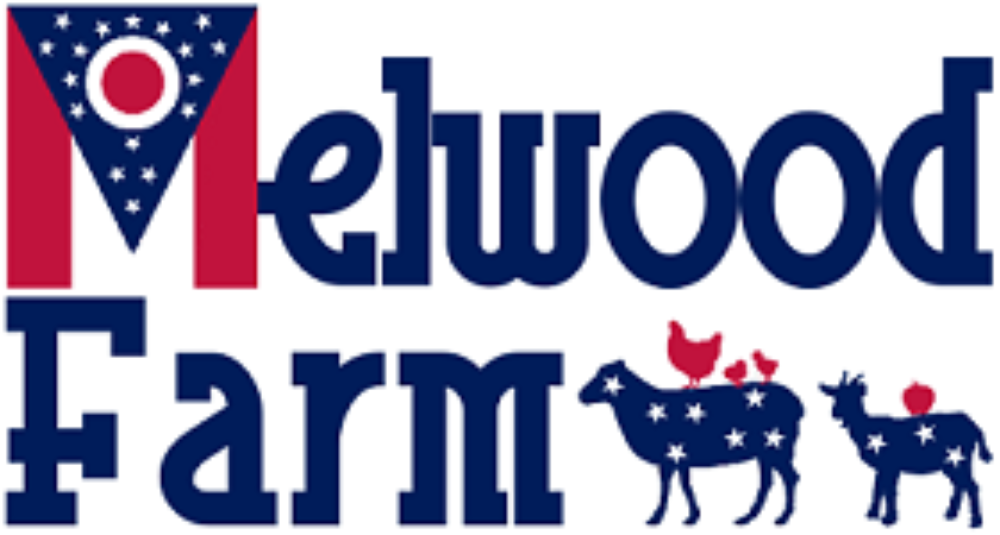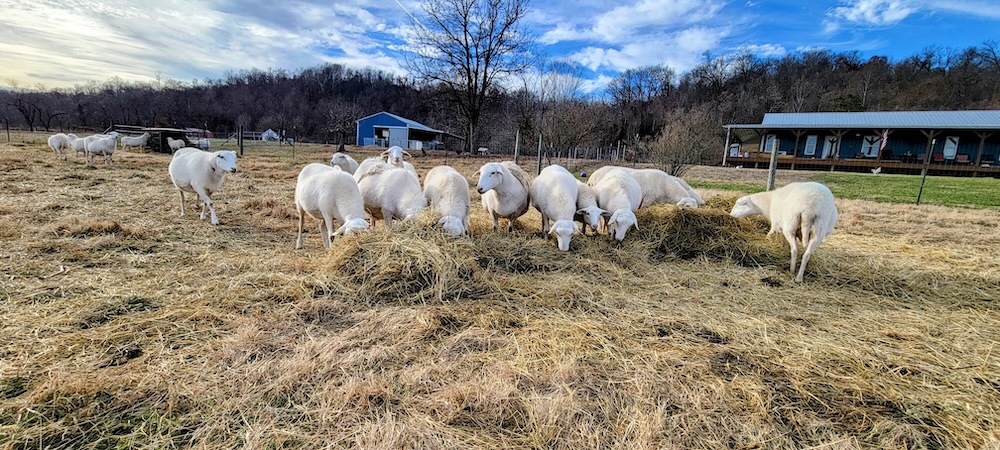I’ve decided to experiment with bale grazing this winter. In the past, I limited my ewes to our barnyard paddock all winter, where I fed them hay in a stationary, collapsible bale feeder on a shared fence line with the rams. It worked okay, but there were some problems.
Problems with Stationary Hay Feeder
The biggest problem with using the stationary hay feeder was the muck. Last winter I was feeding 30 ewes and 5 rams using that feeder. That means there were 132 feet trampling the same approximately 144 square feet of ground every single day, all winter long. You can imagine the mess. While the wasted hay helped keep it from becoming straight mud, it was still a wet, nasty muck.
Another problem was that there wasn’t enough feeder space for the ewes. My 30 ewes had access to three sides, which means that at any time, there could be 10 ewes jockeying for a space on each side. Meanwhile, the five rams had no trouble on their side. Midwinter, I had to MacGyver a second hay feeder for the ewes by connecting some sections of livestock panel to surround a bale.
Finally, putting the rams and ewes on opposite sides of the fence caused plenty of problems. They were constantly bickering with each other, which increased their risk for injury. In addition, I had four ewe lambs that were cycling all winter, and they would take turns flirting at the fence. That drove the poor guys insane. They pushed on the fence and tested the gate far too often.
For those reasons alone, it was time to try something different this year. Hence, I started researching the use of bale grazing.
Why not Bale Unrolling?
I needed to try something different in order to solve the problems mentioned above. I could have tried unrolling bales instead of bale grazing. That is another popular method among regenerative grazing folks who are feeding hay during winter. After a lot of thought, I decided against unrolling bales.
My ewes typically only eat about one bale per week. That meant that I would need to go out several times per week to unroll more hay for them because unlike cows, they will NOT eat hay that has been stepped on, slept on, or peed/pooped on. Also, I don’t like feeding my sheep off the ground because it’s a great way to spread parasites (intestinal worms such as barber pole, bankrupt, and tapes) and protozoa (coccidiosis). However, the biggest reason is that I would have needed to purchase an implement to unroll the bales. I don’t like to spend money if I can avoid it.
What is Bale Grazing?
I started reading articles and listening to podcasts about bale grazing as an alternative (see list at end of article).
Basically, bale grazing is the process of setting out large round bales before the winter-feeding period begins and spacing them in a way that controls access to bales using temporary electric fence. As the sheep eat the bale, they leave wasted hay and their own urine and feces behind, which slowly decomposes over time. All that organic matter distributes nutrients to the soil and seeds it for the next season.
There are several benefits to bale grazing:
- Increases organic matter via the rotting hay waste, which in turn
- Improves the soil’s moisture retention
- Sequesters carbon in the soil for future plant growth
- Increases plant diversity due to germination of seeds from the wasted hay
- Adds protection to bare soil
- Spreads manure and urine more thoroughly around the pasture rather than concentrated in a single area, which means
- Better dispersement of nutrients for more even growth of plants across the pasture
- Less cleanup in and around the barn
- Requires less equipment and effort to feed, making it more cost effective
How I am Using Bale Grazing
I’ve chosen to adopt an adapted method of bale grazing and intend to do so on a single paddock. Rather than setting out all the bales at the beginning of winter, I am setting out two at a time. That means that I move bales about twice a month rather than only the one time. I plan to do this on a single paddock so that if it results in less forage instead of more, only one paddock is affected.
Our winters tend to be very wet rather than frozen and snowy. If I put all 35 bales out now the bottoms would be completely rotten and there would be a lot of mold grown into the layers by mid-January. I can’t risk feeding moldy hay because it can cause listeriosis, and I can’t afford to lose that much hay at $35 per baIe.
I could prevent that by purchasing wrapped bales at $50 each, or by setting each bale on a pallet or some junk tires and then covering them with a tarp. Tarps cost about $5 each, which would equate to about $175. Both options mean more money going out. There would also be time spent setting out the pallets/tires, tying each tarp down, cutting those ties for feeding, moving the fence, and picking up the pallets/tires after each move.
When we store all bales under a single, extra-large tarp that we already own, I save those extra expenses. While it does take time to move the bales twice a month, I still think it will be faster this way. So far, it’s going great, but time will tell.

